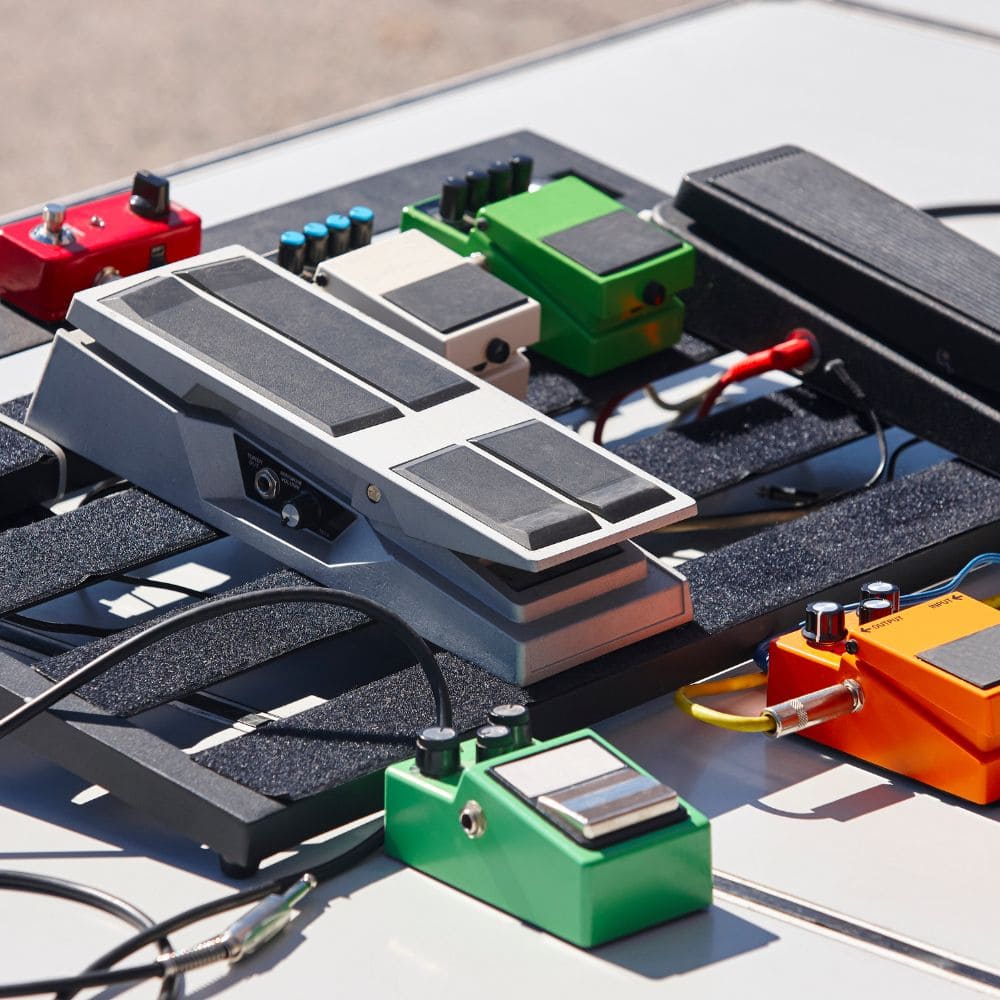What Does an Envelope Filter Guitar Pedal Do?

An envelope filter guitar pedal is a dynamic effects pedal that modulates the frequency response of the input signal based on the attack of the notes played. It is commonly used to create funky and expressive sounds, especially in genres like funk, R&B, and experimental rock.
What Does an Envelope Filter Guitar Pedal Do?
An envelope filter guitar pedal, commonly known as an 'auto-wah,' is a dynamic effects pedal that alters the frequency response of a musical instrument based on the input signal's amplitude. When engaged, the pedal accentuates the dynamics of the musician's playing by adding a sweeping 'wah' sound that follows the player's picking or plucking intensity. The effect creates a wailing, vocal-like quality that adds depth and expressiveness to the instrument's sound, making it an essential tool for guitarists across various genres.
- Additional example of how the envelope filter pedal is used in funk music to achieve a rhythmic, percussive effect.
- In-depth explanation of how the pedal's knobs and settings can be adjusted to modify the 'wah' sound, providing versatility and customization for different musical styles.
- Discussion on the historical significance of the envelope filter pedal's impact on guitar tone shaping, referencing influential musicians and iconic recordings.
How Does an Envelope Filter Guitar Pedal Work?
An envelope filter guitar pedal operates on the principle of dynamic frequency response modulation in response to the input signal's amplitude variations. When a guitarist plucks or picks the strings with varying force, the pedal detects these nuances and adapts the instrument's tonal characteristics, producing the iconic 'wah' effect. This real-time modulation feature enables the pedal to seamlessly synchronize tonal changes with the player's musical expressions, creating a captivating auditory experience.
The internal components of an envelope filter pedal, including the envelope detector, low-frequency oscillator, and variable filter circuit, work in harmony to achieve its unique functionality. The envelope detector captures the dynamic changes in the input signal's amplitude, while the low-frequency oscillator generates a control signal that determines the filter cutoff frequency. These components collaborate to dynamically adjust the filter's frequency response, resulting in the characteristic vowel-like sounds that define the envelope filter pedal's sonic identity.
Notably, the envelope filter guitar pedal's operation can be customized through control parameters such as sensitivity, attack, and decay. These parameters allow the player to fine-tune the pedal's response to their playing style, providing a personalized and expressive range of tonal possibilities. By understanding the inner workings of an envelope filter guitar pedal, musicians can harness its dynamic capabilities to enrich their musical performances, adding depth and creativity to their guitar tones.
Types of Envelope Filter Guitar Pedals
Envelope filter guitar pedals come in various forms, each offering unique tonal characteristics and functionalities. The most common types include optical, analog, and digital envelope filters.
- Optical Envelope Filters: These utilize a light-dependent resistor to modulate the filter's response, delivering warm and organic 'wah' tones. They are known for their smooth and natural sound, making them popular among funk and reggae guitarists.
- Analog Envelope Filters: Employing operational amplifiers and capacitors to shape the effect, analog envelope filters provide a classic and timeless 'wah' sound. With their warm and rich character, they are favored by blues and rock guitarists.
- Digital Envelope Filters: Utilizing advanced digital signal processing, digital envelope filters offer versatile and customizable 'wah' effects with precise control over parameters. They are embraced by modern and experimental musicians for their flexibility and wide range of sound manipulation possibilities.
Tips for Using Envelope Filter Guitar Pedals
When using envelope filter guitar pedals, it's essential to experiment and explore the pedal's capabilities to unlock its full potential. Here are some valuable tips for optimizing your envelope filter pedal experience:
- Adjust the sensitivity and range settings to match your playing style and dynamics.
- Experiment with the pedal's placement in the signal chain to observe variations in tonal response.
- Combine the envelope filter with other effects pedals to create unique and layered sonic textures.
- Utilize the expression pedal input for real-time control over the filter sweep.
- Explore different playing techniques to harness the pedal's dynamic responsiveness.
Popular Song Examples Using Envelope Filters
The envelope filter adds a funky, vocal-like quality to instruments by opening and closing the filter as your playing dictates. While bass players like Bootsy Collins have made it their signature sound, guitarists have also used it creatively in many famous recordings. Here are some examples:
Classic Funk:
- Bootsy Collins - "Bootsy? (What's The Name Of This Town!)": This bassline is practically the dictionary definition of the funky envelope filter sound.
- Jimi Hendrix - "Crosstown Traffic": While not a dedicated pedal, Hendrix used his wah with an envelope filter-like technique, creating iconic vocal-like squelches.
- Parliament - "Mothership Connection": Bootsy Collins unleashes his envelope filter mastery throughout this whole album, shaping the band's signature sound.
Rock and Beyond:
- Jerry Garcia (Grateful Dead) - Live jams: Garcia regularly used an envelope filter, creating swirling, psychedelic guitar solos like in "Fire on the Mountain."
- John Mayer - "Gravity": The intro uses a subtle envelope filter for a unique, talking-guitar effect.
- Red Hot Chili Peppers - "Power of Equality", "Sir Psycho Sexy": Flea's envelope-filtered bass lines add funk and drive to these RHCP classics.
- Edie Brickell & New Bohemians - "What I Am": The signature guitar riff features a prominent envelope filter, making it instantly recognizable.
- David Gilmour (Pink Floyd) - "Another Brick in the Wall (Part 2)": While not exactly an envelope filter, Gilmour's wah usage on this track creates a similar vocal-like effect.
Modern Applications:
- Tom Misch - "Nobody Like You": The jazzy guitar solo utilizes a modern take on the envelope filter for a smooth, soulful sound.
- Khruangbin - "Maria Lionza": Mark Speer's guitar features subtle envelope filter sweeps, adding a dreamy, psychedelic vibe.
This is just a small sampling, and the envelope filter can be found in countless other genres and songs.
Conclusion
In conclusion, the envelope filter guitar pedal serves as a versatile tool for musicians seeking to infuse expressiveness and character into their playing. Its ability to dynamically shape the instrument's tonal response in real time allows for a captivating and immersive musical experience.
Whether you're drawn to funk, rock, jazz, or experimental genres, the envelope filter pedal opens up a world of sonic exploration and creative expression, making it a valuable addition to any guitarist's arsenal.
Click here to find the best envelope filter pedal for guitar players on the market.
*FYI, when you make a qualifying purchase through one of our links, we might receive a small commission from Amazon or other retailers, at no additional cost to you, which helps us to fund this site. It's a way to find what you're looking for while supporting us in the process!
